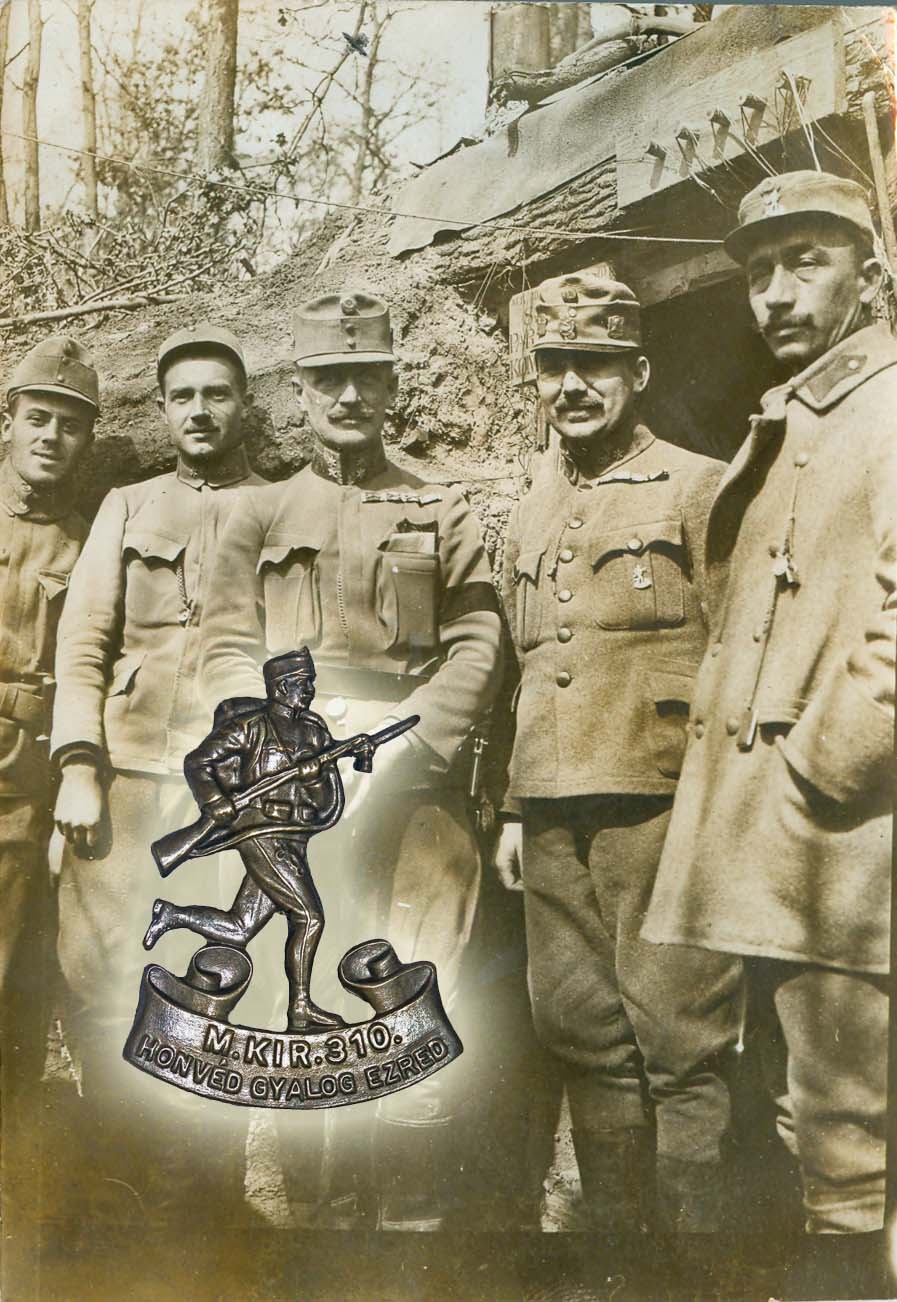310th Honvéd Infantry Regiment
The Carpathian Winter Battle of 1914-15 decimated the regiments of the Monarchy. Moreover, the protracted two-front war overcame the calculations of previous war plans. Much more army, more infantry regiments were needed for proper defense, not to mention offensive operations. Therefore, many of the replacements and march regiments arriving at the front in the winter were formed into newly established regiments wherever this was possible. In the early spring of 1915, the 309th and 310th Infantry Regiments were formed. Both regiments gradually developed to full numbers, with three battalions. Together, the two regiments formed the 129th Infantry Brigade.

Of particular interest is the numbering of the Honvéd regiments, which lasted until 32 before the Great War, continued only up to the 33rd and 34th Army Regiments. The 35th Regiment was not formed any more, instead the numbering jumped to 300. Of course, the numbering did not reach 300 in a row, so many infantry regiments have never existed. The Monarchy did not have 300 infantry regiments altogether, even taking insurgents into consideration. The regiments numbered over 300 also had cadres, supplementary command in the hinterland, despite the fact that the crews of these regiments were already completely mixed in terms of their place of origin.

The lieutenant colonel in the middle of the wear photo and the captain to his right may presumably be visitors from the brigade headquarters to the 310s positions. I deduce this from the fact that in the middle of the captain’s cap you can see the badge of the 309th Regiment, on his jacket pocket the 310th. The field cap of the officer next to him on the right shows the 310 badge. He presumably received the officers from the brigade. The 310 badge is a very nicely executed piece with the image of the storming buck. Several metal versions of the badge have been made. The picture may have been taken in the spring of 1917. The lieutenant colonel still wears the mourning ribbon ordered at the death of Franz Joseph on his left upper arm.




